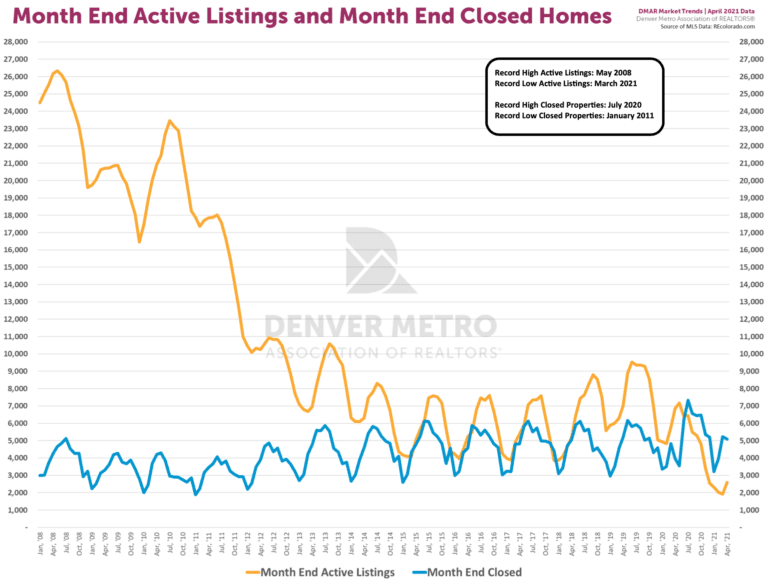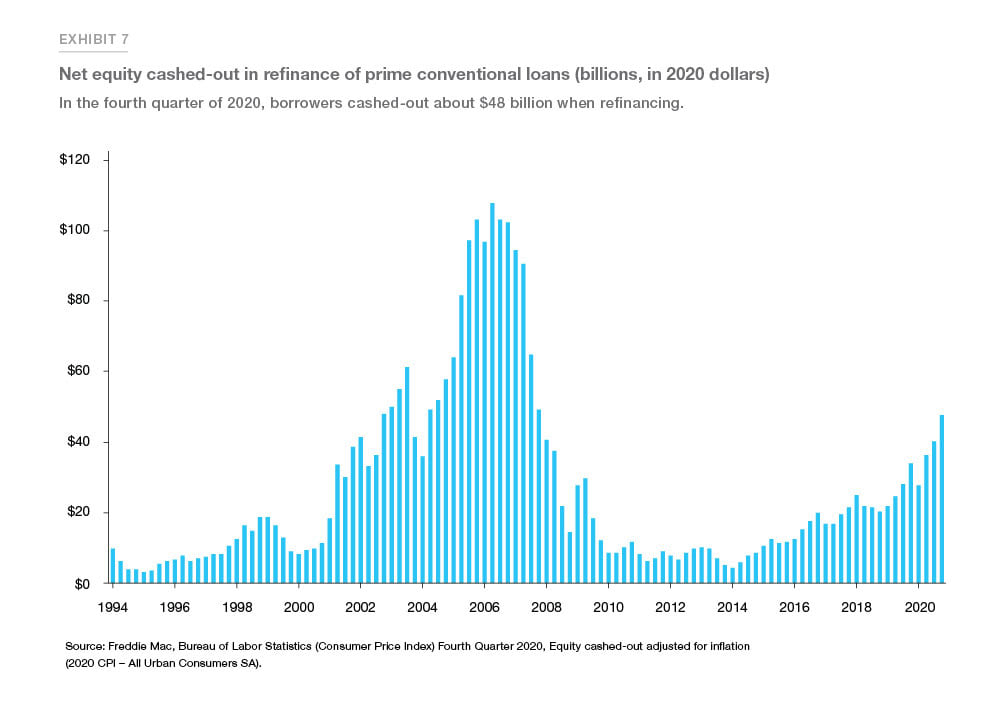
This is starting to get very boring.
Every month I say the same thing, blah, blah, blah: record prices, low-interest rates, bidding wars, people can’t find a house to buy, entry-level buyers can’t afford to buy, etc.
Now that we are all clear that we are reading the same story – again, and probably will be for the next few months, let’s touch on a few items of note.
Prices (Part A)
In the Denver metro region, the average home price is up over 24% year over year to $623,825. TWENTY-FOUR PERCENT! The median price of a home at the end of April was $526,000.
Because the supply of homes is severely behind demand, we continue to have a severely unbalanced market.

Prices (Part B)
Thanks to Jim Renshaw at Land Title Guarantee, we have some interesting data to see how pricing accelerated over the last month. The following chart shows amount paid over asking price, by price bracket.
As long as we have demand greater than supply, it’s hard to see how we get out of this extreme price appreciation.
By the way, there are a few real estate industry folks who are saying we don’t have an “inventory” problem, we have a “demand” problem. That is flat-out incorrect. I mean, they are correct if two-thirds of the buyers went away tomorrow. If it did happen then the fall-off in demand would cause the market to sharply adjust. But with the increase in our local population (and possibly household formation – I have heard that statistic but not seen it yet), buyers going away overnight is probably not going to happen.

To my thinking, saying we have a demand problem is completely inaccurate. What we have had has been a lack of supply for many years that has culminated into this crisis (not trying to be dramatic, but can’t think of another word, and for some potential buyers it occurs as a crisis).
Going back to the DMAR active and sold chart: when the yellow line is barely above or touching the blue line, it means there is an equal number of homes for sale at the end of the month as were sold. Historically (before 2013), this has not happened, and definitely not for as long as it has. Now, the lines have crossed. There are more homes selling every month than there are active. In other words, if homes were lined up on a store shelf, there would be only enough homes for one week of the month – maybe two. Then we would be out of homes until next month.
As long as this is the phenomenon, then bidding wars and increasing prices are likely to continue.
Refinancing Activity
Go to Google and you can see that many people are searching “real estate bubble.” Are we in a bubble? The definition of an asset or speculative bubble is one where prices for an asset rise exponentially over a period of time, well in excess of its intrinsic value. What does intrinsic value really mean? The well-respected professor and investor Benjamin Graham first coined the term ‘intrinsic value’ in his book Security Analysis in 1934 (co-authored with David Dodd), but really never defines the term. But that’s another discussion and one I am not an authority on.
So, I don’t know if we are in a bubble or not. We definitely have different circumstances right now than 2005-2007, however, one measure has captured my interest: refinancing. Particularly, cash-out refinancing, which is where the homeowner/borrower refinances their current loan and takes some of their equity out as cash, increasing their loan balance.
While many people have refinanced in the last year, there were also significant portions of homeowners that did multiple refinances as the rates continued to tick lower last year. Currently, approximately 60% of U.S. mortgage applications are for refinancing.
While there is nothing inherently wrong or dangerous about refinancing to a lower rate, what is more potentially worrisome is cash-out refinancing. Freddie Mac provided the following cash-out refinancing data through 2020:

The fourth quarter of last year demonstrated a continued increase in the amount of cash-out refinancing. While Freddie Mac is quick to point out it is still well below the peak of 2006, it does demonstrate that there is a lot of money being pulled out of homeowners’ new equity. Where is that money going, and is it continuing? As for the latter, (anecdotally) when speaking to a few lenders recently they have said that a lot of their current refinancing is for cash-out.
The bottom line is that significant double-digit price appreciation is very real. Cash-out refinancing, while not (yet) at the pace of 2005-2006, may be something to watch. If that money pours into the economy, does it continue to stretch and heat up economic activity, including prices (and inflation)?
What I am waiting to see: what happens this summer. Summer is typically when the market activity has crested for the year. Will the market take a breather, allowing supply to catch up? Or will we plow right through? Stay tuned.



